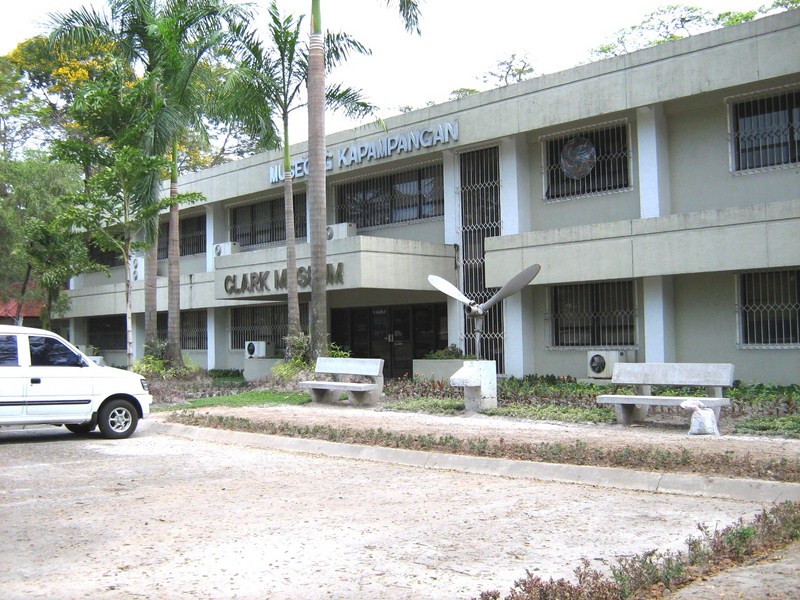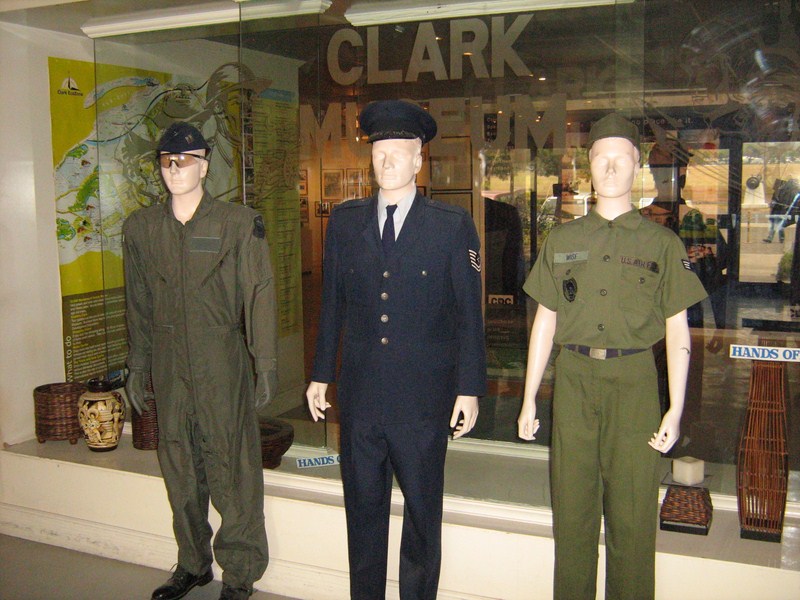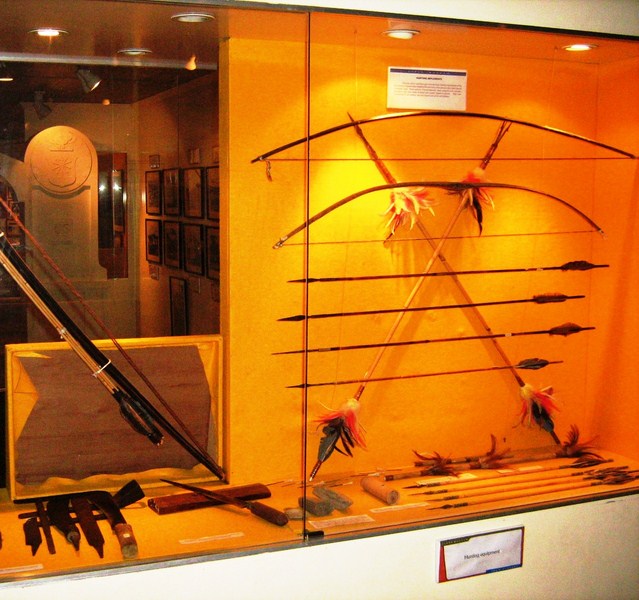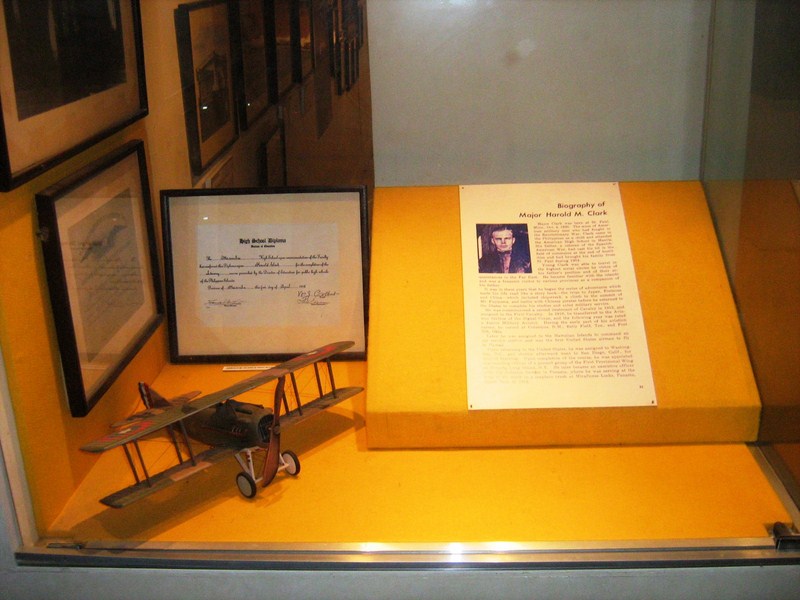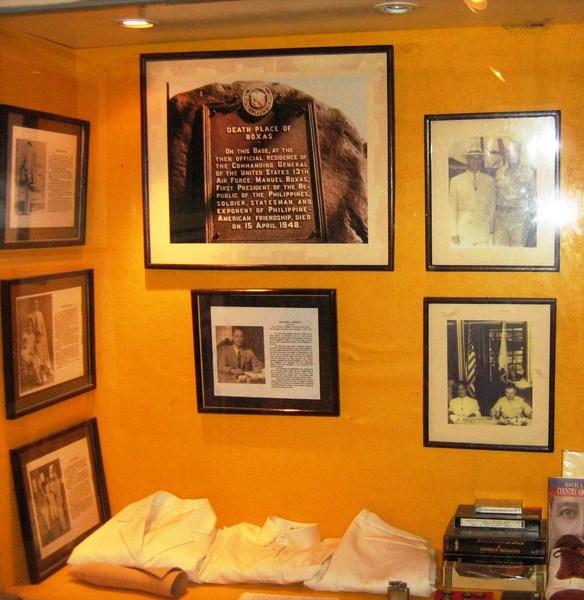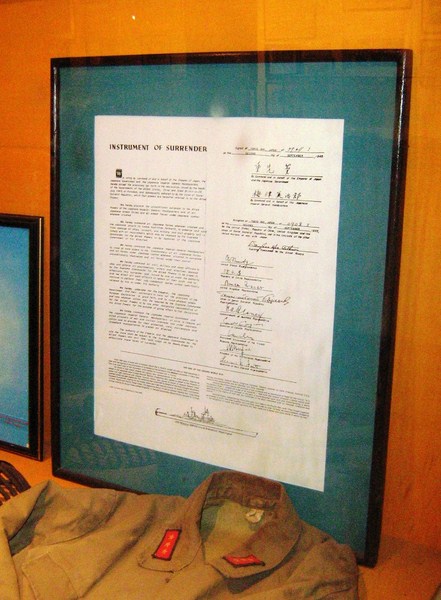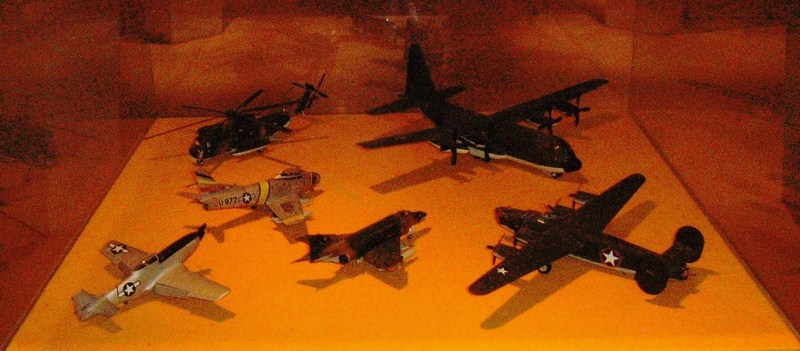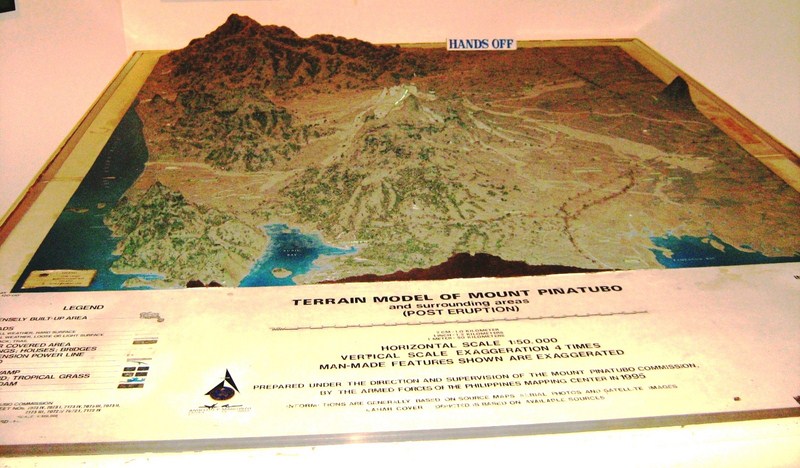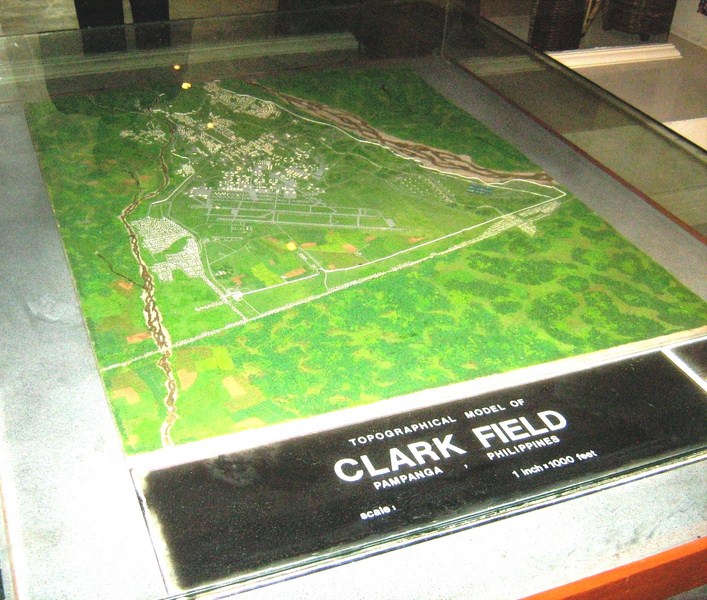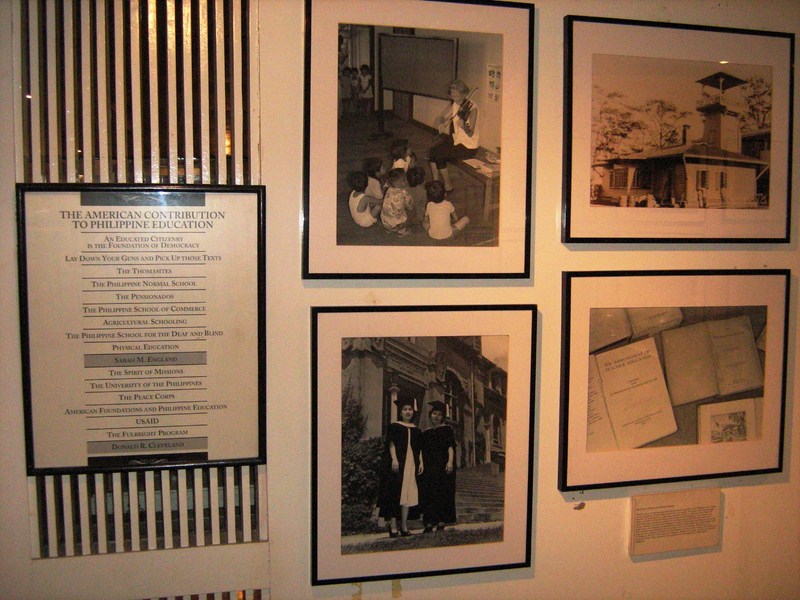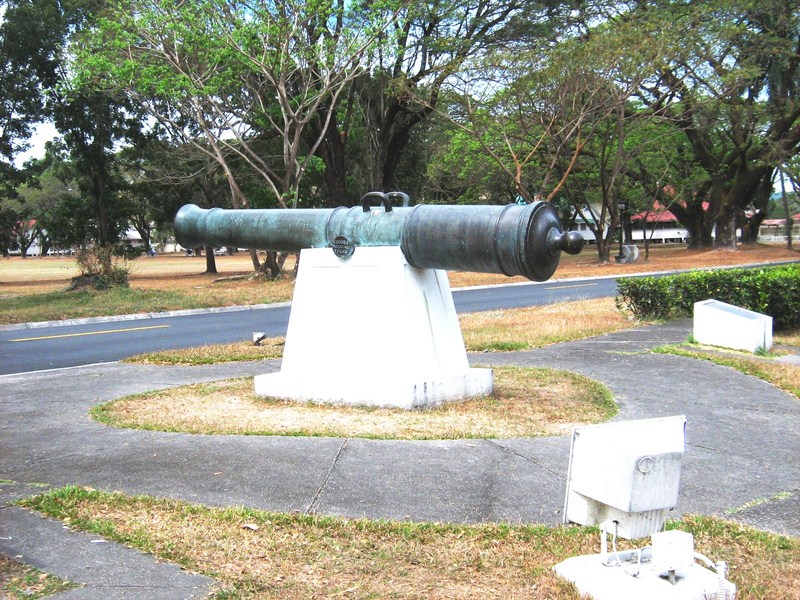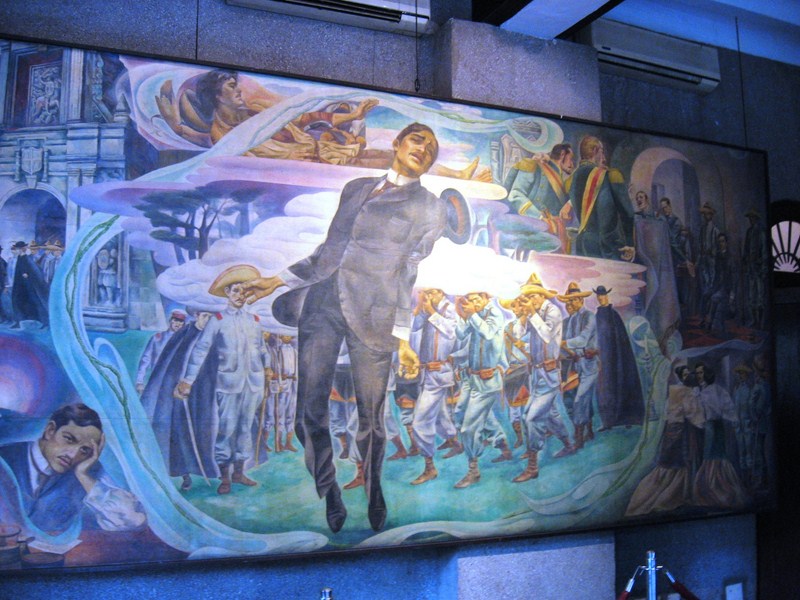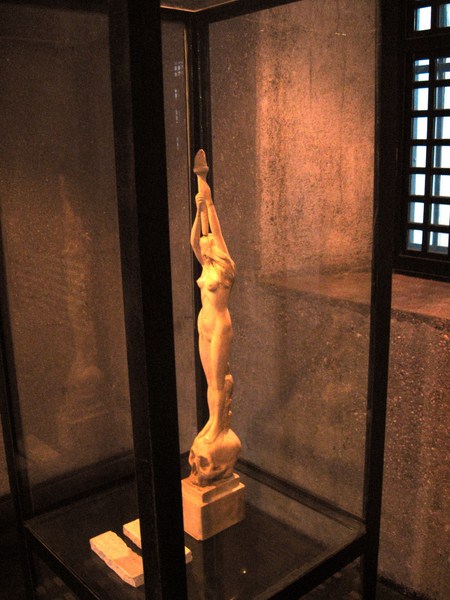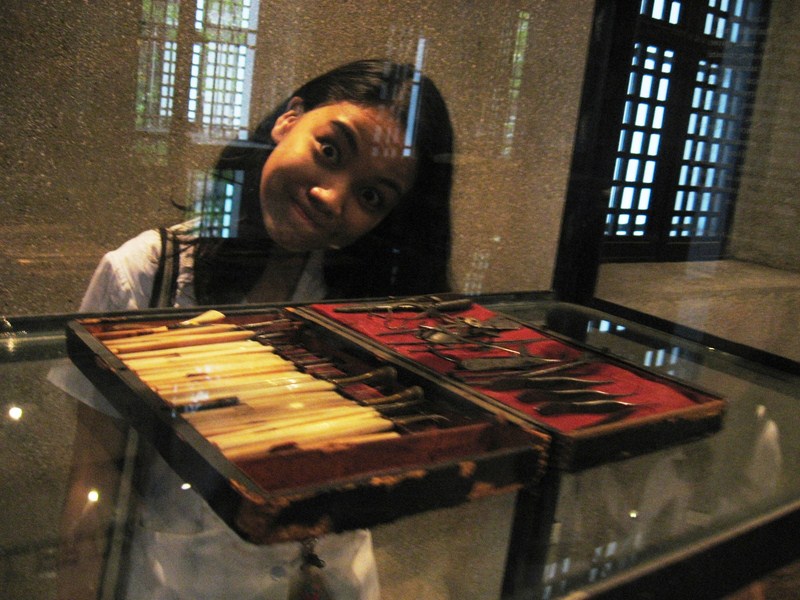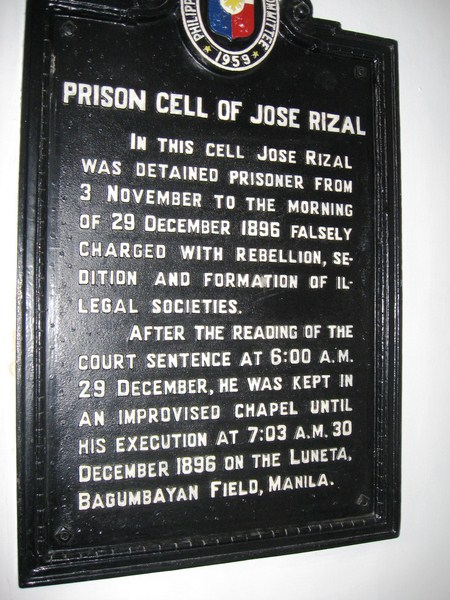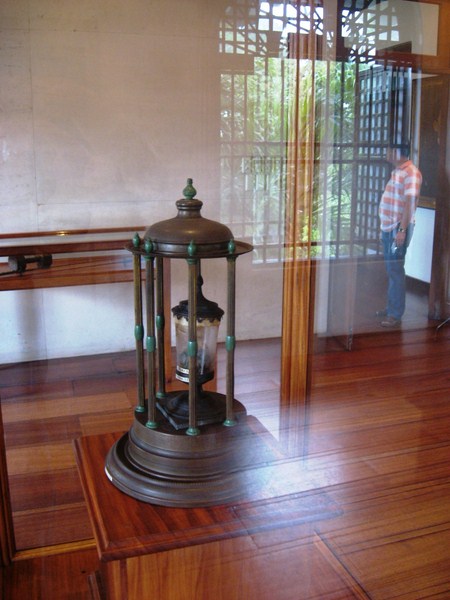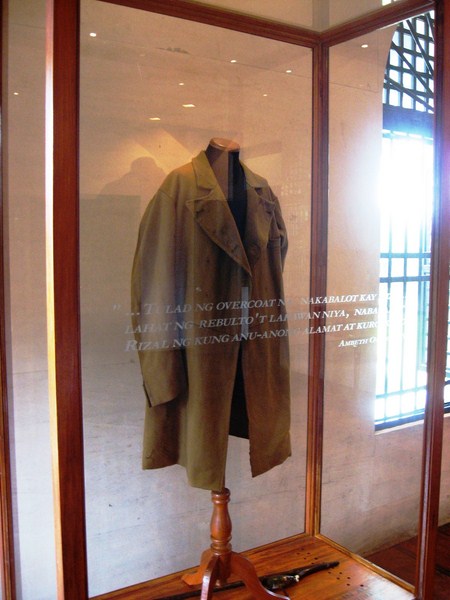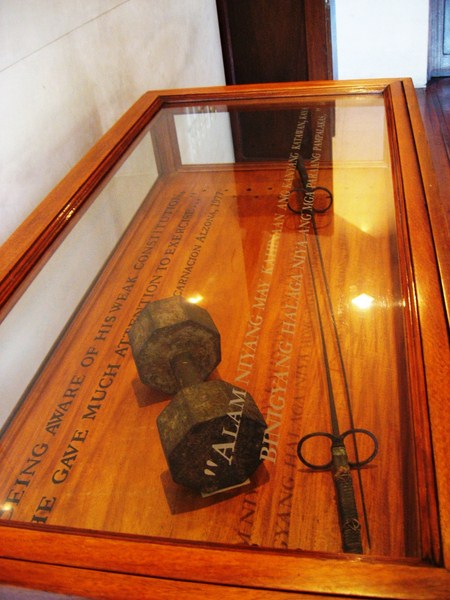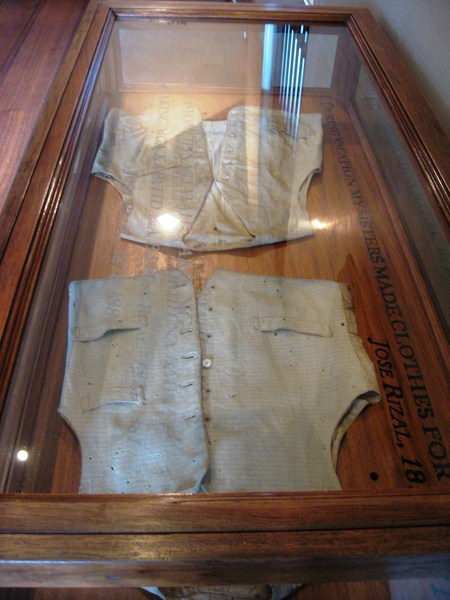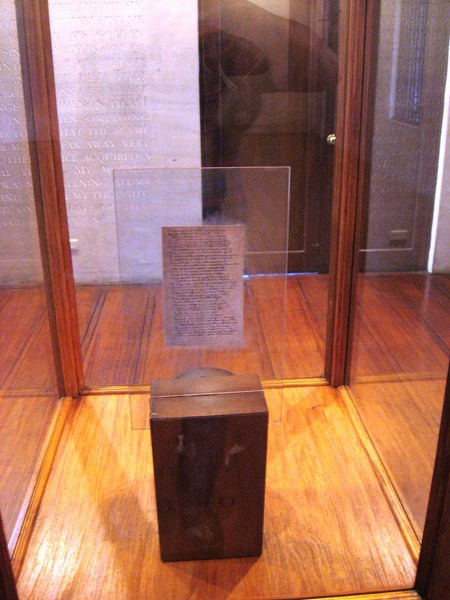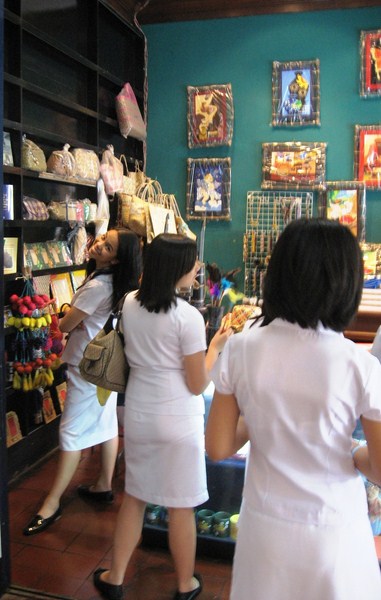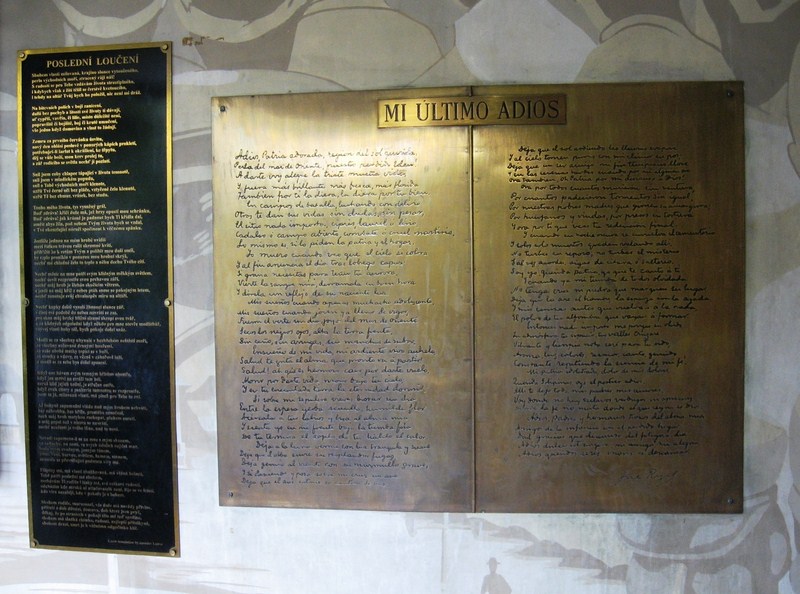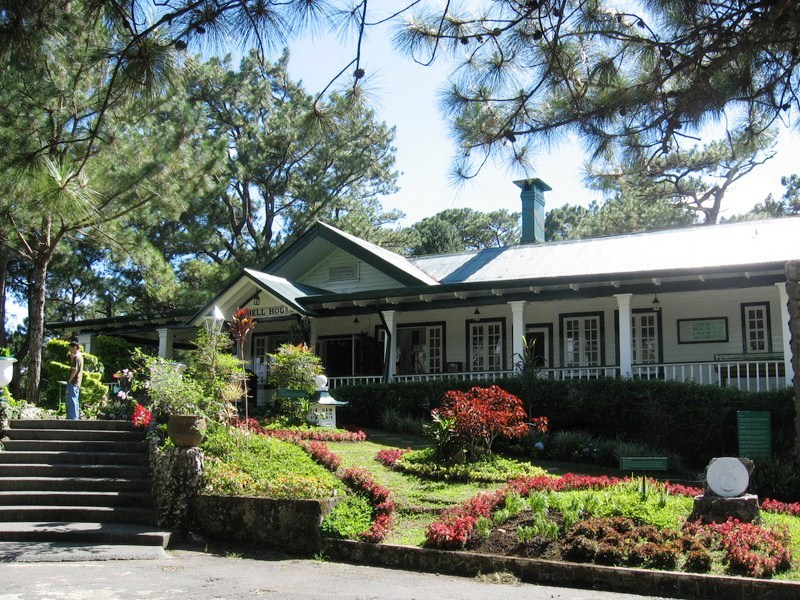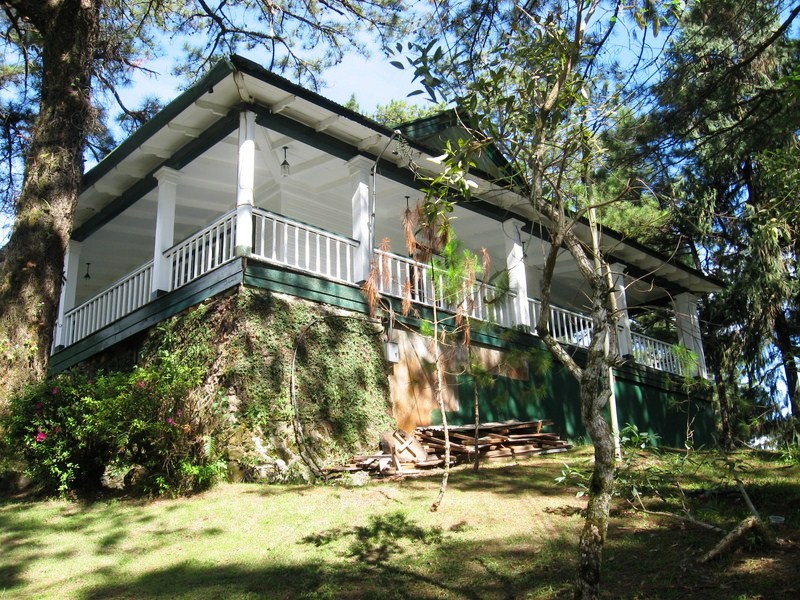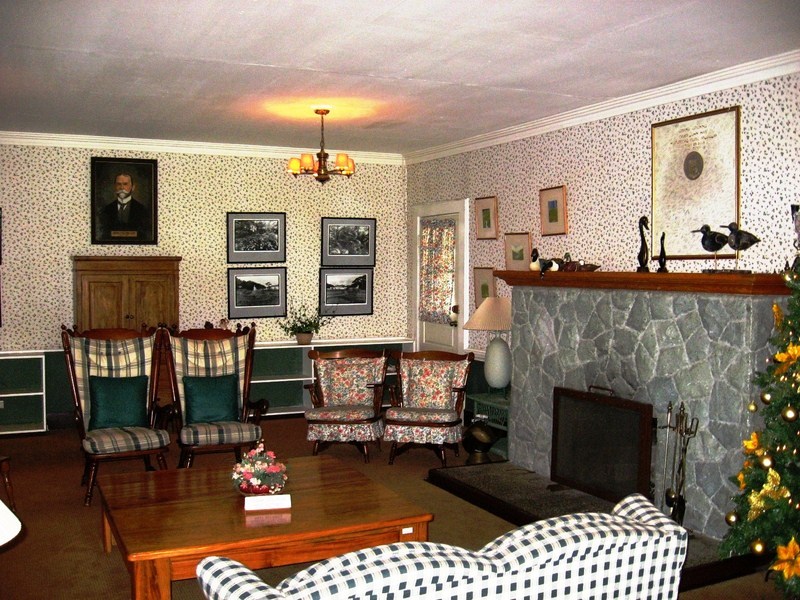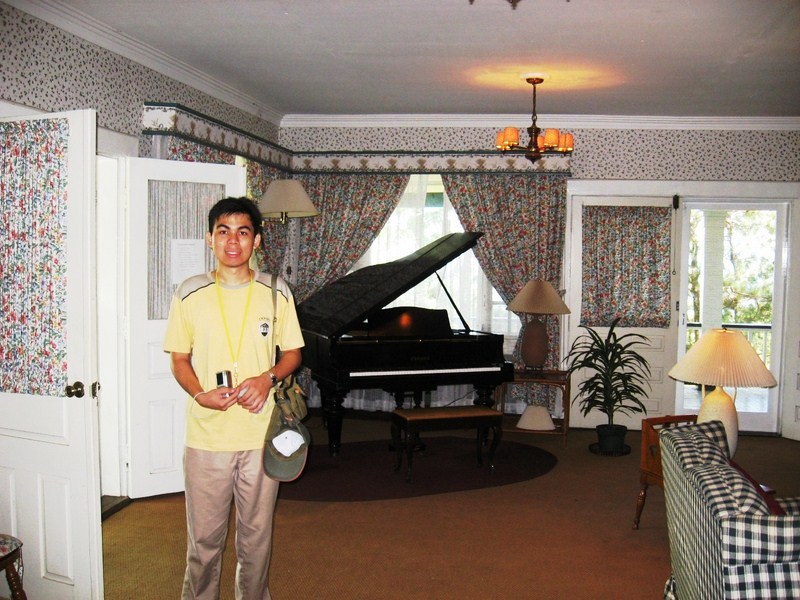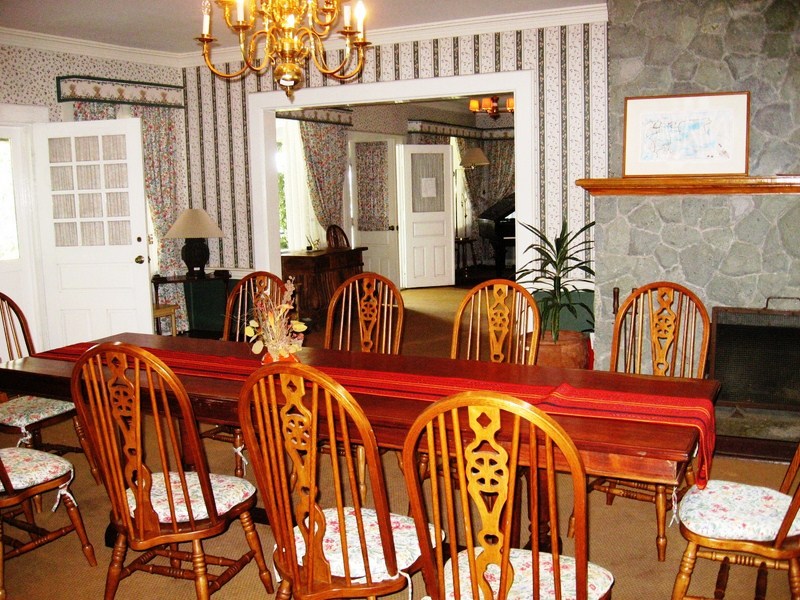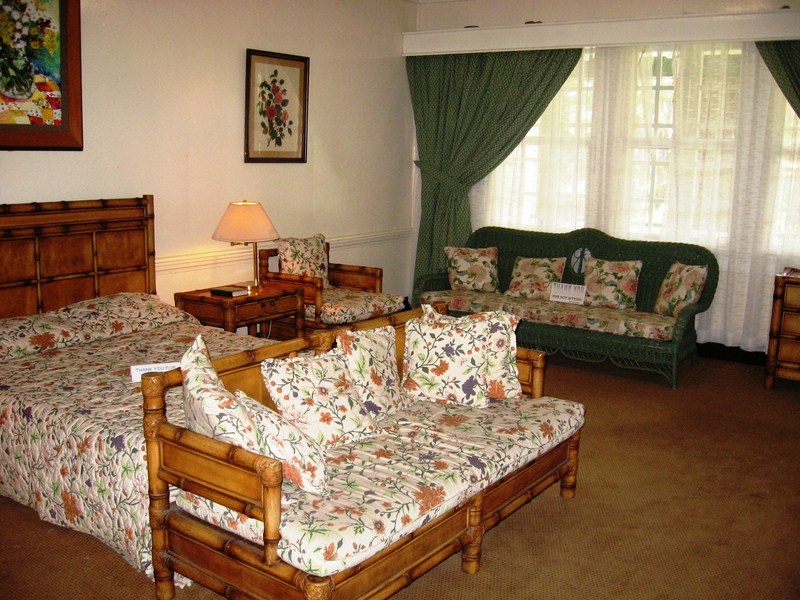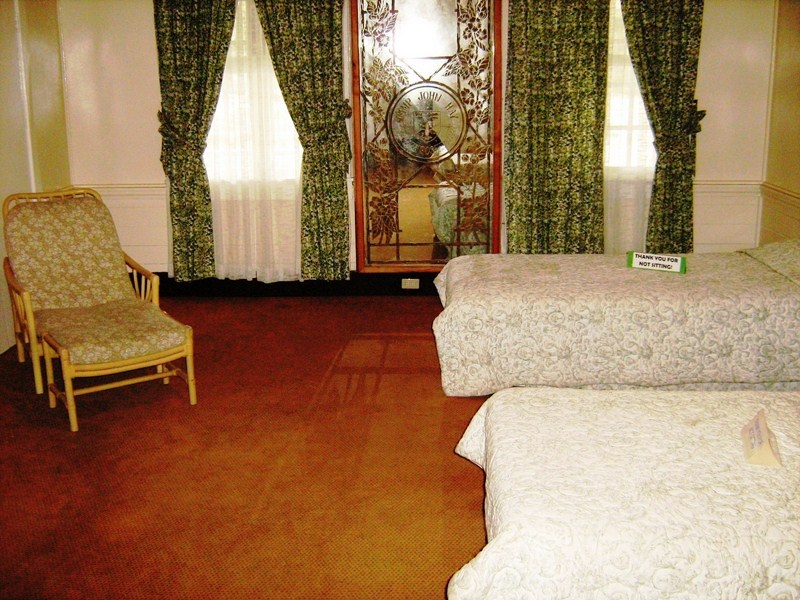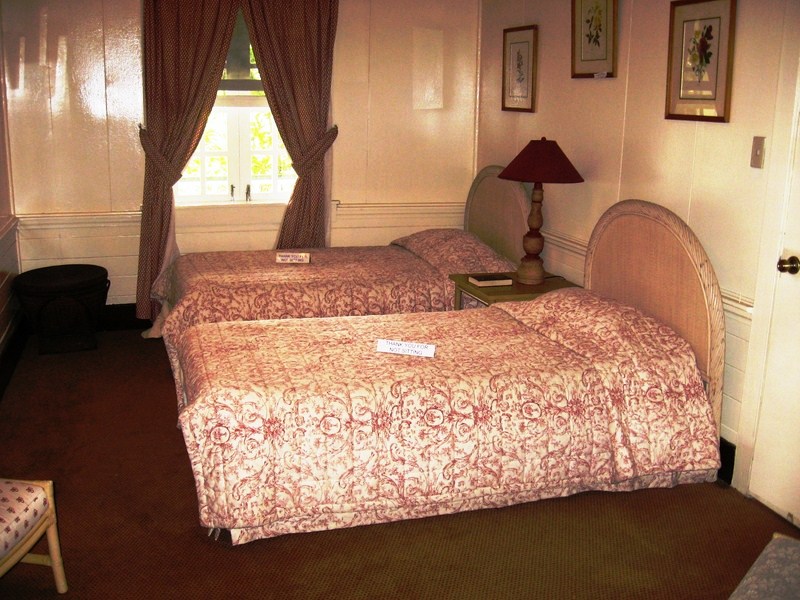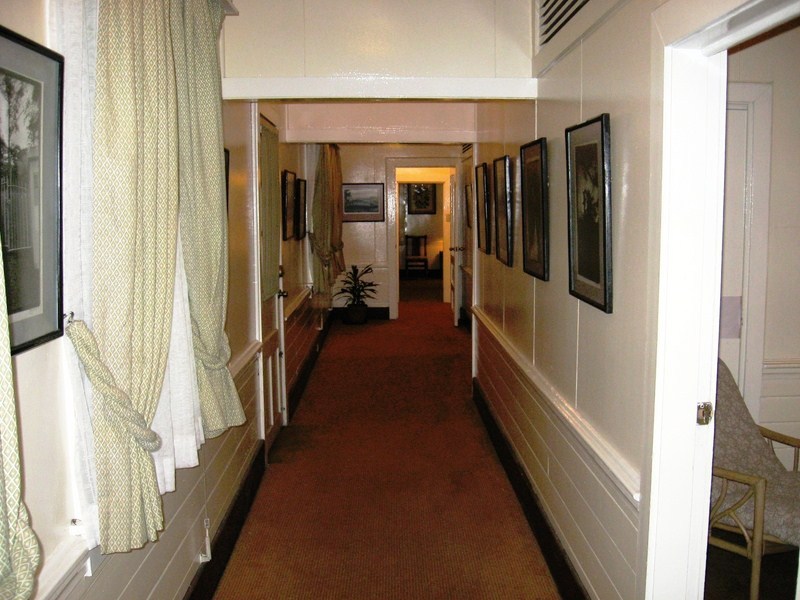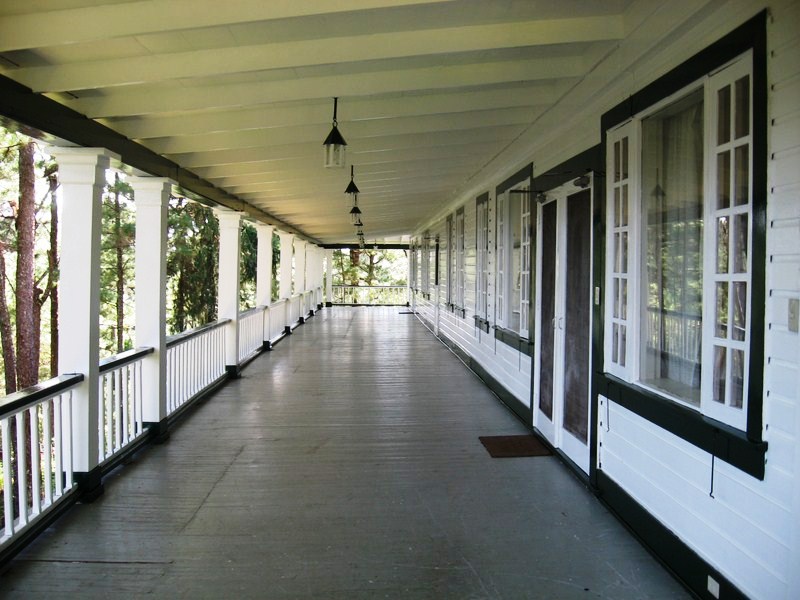After watching the early morning flight of Clark’s famous hot air balloons, Jandy and I returned to our Toyota Revo and made our way out of Clark as we still wanted to explore nearby Angeles City. Along the way we made brief stopovers at some of Clark’s historical sights. Our first stopover was at the old parade grounds.
.jpg) |
| Fort Stotsenberg Gate Posts |
The Fort Stotsenberg Gate Posts once stood at the Dau Gate, the first gateway to Fort Stotsenberg , from the early 1900s until the Japanese Occupation in 1942 when they were removed and buried as landfill. Unearthed intact in 1965, these posts were moved to the American Legion Post (near the Personnel Office and not far from the Clark Gym) and finally relocated to the south side of the entrance of the parade grounds in 1984.
| Clark Museum |
Near the old parade grounds, on the original site of the 217-bed base hospital (dating to September 1903) and the Base Commander’s office, is the Clark Museum, also called the Kapampangan Museum.
Check out “Clark Museum“
| Death March Marker |
At the entrance of the Clark Veterans Cemetery, along the main entrance road, just past the main gate, is the Death March Marker. This memorial marker was erected by the Manila BPO Elks lodge in honor of fellow Elks, American and Filipino POWs, who passed this spot during the infamous Bataan Death March in 1942.
.jpg) |
| Clark Veterans Cemetery |
Just inside the Main Gate, along the Mitchell Highway, is the 20.365-acre, 12,000 plot Calrk Veterans Cemetery, formed between 1947 and 1950 to house 7,559 military and civilian remains. There are headstones/markers and remains from at least 4 other U.S. military cemeteries (Fort Stotsenberg 1 and 2, Fort McKinley and Sangley Point Naval Cemetery). These include 2,030 fallen American soldiers, including at least 638 Philippine Scouts (PS) from the pre-World War II era. Some, but not all, were veterans of the Spanish-American war and the Philippine-American War.
| Graves of the unknown dead |
Others are graves of U.S. veterans from the U.S. Army, U.S. Navy, U.S. Marine Corps, U.S. Coast Guard and U.S. Air Force who died after World War II (all World War II dead were moved to the American Cemetery in Manila) and during the Korean and Vietnam War. The largest category interred is civilian, mostly U.S. and Filipino, all of whom worked for the U.S. government, and their dependents. In addition, nationals from France, Spain, Canada, Japan, China, Vietnam and India are also buried there. A little over 1,600 remains are still unidentified. The cemetery is also the only place in the former U.S. 13th Air Force base where the U.S. flag flutters alongside the Philippine flag.
| Salakot Arch |
Finally, at the main gate entrance to the Clark Freeport Zone, at Bayanihan Park, is the Salakot Arch, a cavernous welcome landmark fashioned after a farmer’s hat built in 1979. It stands as a sign of Philippine-American friendship over the years and was originally built to symbolize the historical March 14, 1947 signing of the RP-US Military Bases Agreement. Beyond the arch is Angeles City.







